Business Introduction Letter Format (30 Best Examples)
A Business Introduction Letter is used by businesses to introduce themselves by highlighting the services they offer or goods they produce to potential customers, partners, distributors, investors, or any other. Business introduction letters are used by both start-ups and established companies.
An introduction letter is a formal document written by the business owner or a company’s official representative. A well-written introduction letter creates a good first impression of the company to the investor or company, which increases the chances of a collaboration ensuing. To increase value to the company, it must outline how the service or product being offered is useful to the customers.
Two common types:
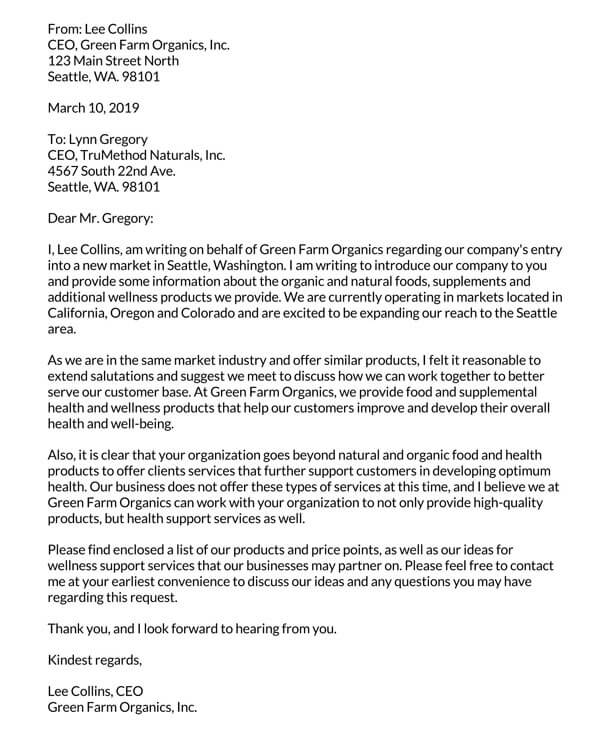
Business-to-business
A business-to-business type letter introduces the company to other businesses in an attempt to sell, buy, or partner with them. This type of letter of introduction can be used to invite other businesses to invest in a company.
Download: Microsoft Word (.docx)

Business to Customer Introduction Letter
A business-to-customer type of letter is used to introduce the company to potential clients. It can be used to introduce a new company, new product, or a limited discount to new or existing customers.
Download: Microsoft Word (.docx)
Four Ways to Introduce your Business
A business can introduce itself in different ways depending on who they intend to reach out to. This article will look into the four ways a business can effectively introduce its services and products to customers or other businesses effectively.
These four ways include:
Send an introduction letter or email
A business letter of introduction can be issued via mail or email.
The steps followed when introducing a business through email is as follows:
Mục Lục
Use the letterhead to introduce the company
For mail letters, after introducing the company, the author then introduces themselves by providing their name and their position in the company. In an email, state the company being introduced.
State the purpose of the business
The letter then states what the company does by stating its products and services and how they solve a problem. The company’s mission can be stated to achieve the same.
Get into details
The letter should then state the objective of the letter. Some letters can be for basic introductions, while others can be for greater reasons such as seeking investments, partnerships, or any other. The objective should come out clearly.
Suggest the next steps
The letter should then be finalized by providing a well-defined way forward. This can be by suggesting having a meeting or a conversation, maybe through a phone call. The author should provide their contact information and an invitation for a sit-down.
Launch on social media
Social media is also a viable alternative for businesses to introduce themselves. It has actually become the most popular means for businesses to engage with customers and other businesses. Twitter and Facebook are popularly used by businesses to engage with customers and other businesses.
The steps below can be used by a company intending to introduce itself to customers or potential partners:
Create a social media account
Create social media accounts using the business email. Name the account using the official business name or a name that clearly indicates the specific company to which the account belongs.
Customize the account profile
State the purpose of the company in the “description” or “about” section. Use engaging language to do so. Select a colorful and creative photo and upload it as the profile photo. A photo of the products or services, or employees or satisfied customers can be used. Indicate the company’s location and a link to its official website.
Follow or add friends using the account
Physical stores should try to add and follow people within their locality. However, online service providers can add or follow people irrespective of their location. More followers or friends mean more traffic to the business account. To engage with customers, opt to comment on competitors’ posts.
Give the followers and fans incentives
Incentives can be as discounts or special deals to new followers or loyal fans. An example of a special deal is “buy two get one free.”
Respond to comments or messages
Interacting and engaging with followers and fans on the company’s page gives the company a human touch and attracts people to come back to its profile, increasing traffic.
Update the account regularly
Upload photos, post announcements, special deals, wish people good holidays to remain relevant to the followers. Post at most twice a day. Excessive uploads become monotonous over time.
Create an engaging website
Businesses can utilize websites to make themselves known to customers and other businesses.
The procedure to this is as follows:
- Identify the target audience and provide introductory information relevant to the audience. This includes the company’s background, product or services, and mission.
- Provide some context to the background information by giving a brief story that relates to establishing the company. Aspects to consider are funding, inspiration, motivation, partners, etc.
- State what makes the company unique. Use customer feedback to determine what is special about the company’s products or services.
- Keep the contents as brief but efficient as possible. Let the introduction be at most one paragraph.
- Proofread the introduction and ensure it is professionally written. Correct for any grammar, typos, spelling, punctuation mistakes, etc.
Make in-person introductions
Business introductions can also be made in person.
The following steps can be followed when introducing the company to someone in person:
- Prepare a pitch that addresses how the company’s product or service solves a particular problem.
- Meet the customer, investor, or business representative. The business owner or representative should give the investor, customer, or business representative a firm handshake and make an introduction by stating their position in the business.
- Begin with a casual conversation and look out for openings within the conversation to talk business. Be positive throughout the conversation. Introduce the company and mention compelling details such as mission, impressive sales, etc.
- Enquire about the other person so that the conversation is not one-sided. Ask generic questions and avoid asking very personal questions.
- Present the 30-second elevator pitch preferably when prompted by a question like “What does your company do?” keep the pitch short; 30 seconds or shorter is enough. Long pitches can be overwhelming to the customer or investor.
- Highlight probable issues or challenges that would occur if the product did not exist. Then explain how the company addresses these issues or problems.
- Propose any actionable steps that should succeed the meeting. This can include providing details of how the individual can access the company’s product or service in the future. Hand them a business card or phone number, shake their hand, and make concluding remarks by asking for a meet-up and/or a business card.
Format of a Business Introduction Letter
A business introduction letter should be formatted like any other business letter.
The following aspects of the letter should be formatted as follows:
Margins
A half-inch to one-inch margin can be used on all sides of the letter.
Line spacing
A business letter should be single-spaced for both lines and paragraphs. A blank line should be left after every paragraph.
Alignment
A semi-block alignment can be used where some details such as contact details, salutation, and closing statement are aligned to either the right or left side, depending on the standard format of a letter.
Font
Any font size range between 10-point and 12-point is acceptable. A standard font like Times New Roman should be used.
Printing specifications
The letter should be printed on an unlined 8.5” x 11” paper. The sender’s and the recipient’s addresses should be made that they both fit in a standard nine-inch envelope.
Other formats
Business introduction letters can be formatted to match the company’s correspondence. Some companies indent paragraphs with the body of the letter. The font can also be varied to match other company’s letters.
What to Include in a Business Introduction Letter
To craft an effective business introduction letter, certain information must be presented in the document.
These include:
Letter heading
The letter heading indicates the sender’s information. Provide contextual details such as the company’s name, return address, phone number, and email. The letter heading should b placed at the top left-hand corner of the page.
Date
Skip one line and write the date when the letter was written. Use the appropriate date format for the region; dd/mm/yy or mm/dd/yy.
Recipient address
After another blank line, the recipient’s address is then written down. Include the recipient’s name, designation, and the company receiving the letter.
Note: Remember to change the recipient’s details (name and address) and greetings if the business introduction letter is to be sent to multiple recipients. “CC” all the people receiving the same copy of the letter.
Subject
There should be a subject or “RE” line. Make sure it clearly communicates the purpose of the letter – learn about the company.
Greeting/salutation
Use a formal and polite greeting or salutation. Use “Dear” followed by the recipient’s title, e.g., “Dr.” followed by the person’s name. In case the recipient’s name is not known, use appropriate titles such as “Dear Marketing Manager” or “Dear Managing Director.”
Note: Introduction letters being addressed to groups such as boards of directors should use the group’s official name – for example, “Dear Board of Directors.”
Introduction
Supply a short introduction stating the purpose of the letter. In at most two sentences, state what the company does and why the introduction is being made.
Body
Expound on how the company’s products and services solve a particular problem and why the introduction is being made. Be direct and professional. Exhaustively market the company to the recipient.
Closing
Close the body of the introduction letter with a two-sentence paragraph that sums up the introduction and thank the reader for reviewing the letter.
Call-to-action
Suggest a meet-up or invite the client, customer, investor, or business to reach out. Provide contact information they can use for communication.
Signature
A complimentary close should be provided before the letter can be signed. After the signature, the sender’s name should then be included. Their position in the company must also be indicated.
Enclosures
If the letter is being sent with other attached documents, it should be listed under “Enclosures.” This heading should be after the sender’s name and separated with a blank line.
Tips for Writing an Effective Business Introduction Letter
To craft an effective business introduction letter, there are several considerations worth looking into.
They include:
Be objective
First, establish the intent or purpose for writing the letter and align everything with that objective. Is it a letter to introduce a new company? New product? Make a sale? Etc. This helps you in writing an effective introduction letter.
Research the company or market
Find out information that can be used to come up with a personalized introduction letter. Find out the interests or needs of the client, customer, investor, or business and discuss how collaborating with the company would be beneficial or how it solves their needs.
Open with a strong statement
Have a strong opening statement that gets the reader’s attention and motivates them to read the document. Use the company slogan or relevant quote.
Add only relevant details
Supply only information that satisfies the letter’s purpose and targets its audience. Irrelevant information compromises the quality of the introduction letter.
Keep it concise
Be brief and communicate exactly what is needed. A business introduction letter of 300-400 words would be sufficient to introduce a company effectively.
Proofread
Avoid submitting a letter full of spelling, grammar, punctuation errors, and typos. Instead, edit accordingly and review the letter again before sending the letter.
Business Introduction Letter Template
[Sender’s name]
[Sender’s title/position]
Name of company]
[Street address,]
[City, State ZIP Code]
[Date]
Recipient’s name]
Name of company]
[Street address]
[City, sate ZIP code]
RE: Introducing Company ABC
Dear [Name of recipient or job title]
I am Recipient’s name], writing this letter on behalf of [company name] as the [position]. We launched our company at the beginning of this year. We deal with [product/service] to help our customers [How the product/service helps the customers].
Our company has managed to prosper in sales despite the challenges of shipping raw materials, an area your company is well-equipped to maneuver seamlessly. We believe that if we combine our efforts, we can provide the [product/service] at a more affordable price and boost our sales.
I want to invite your company to work with us as the move can be significantly rewarding if the sales and revenue numbers are anything to go by. Our company has managed to penetrate a market with huge potential dealing with [product/service]. We hope to hear from your team to discuss further how our partnership can be realized. Kindly reach out via email at [email protected]
Yours faithfully,
[Signature]
[Sender’s name]
On behalf of [Company name]
Business Introduction Letter Sample
Ashley Brie,
Head of Marketing and Sales,
Baby Bee Fashion World,
7334 Peg Shop Street
Carlisle, PA 17013
11th October 2021
Jasmine Taylor,
Biggie Online Store,
8114 33rd Ave,
Miami, FL 1449
RE: Introduction of Baby Bee Fashion World
Dear Jasmine Taylor,
I am Ashley Brie. I’d like to introduce Baby Bee Fashion World, a company that sells fashionable high-end baby clothes. We want to expand our market into different states such as Miami without physically setting up stores.
We’ve been in operation since 2016 and have managed to make sales of more than $1.5 million. Though the business has been excellent, we want to capitalize on the attractive market in Miami and wish to utilize the capacity of reputable online stores like your company to do so. Our products cater to children aged between 1-10 years. Our company is a one-stop shop for every parent as we offer different categories of clothing; casual wear, formal wear, sportswear, costumes, and many more.
We would like to discuss further how we propose to go about the partnership, and I am therefore inviting your company to contact us through [email protected]
Thank you.
Sincerely,
[Signature]
Ashley Brie,
Head of Marketing and Sales,
Baby Bee Fashion World
30 Professional Examples
Following are some free downloadable templates for you:
Standard business introduction letter templates
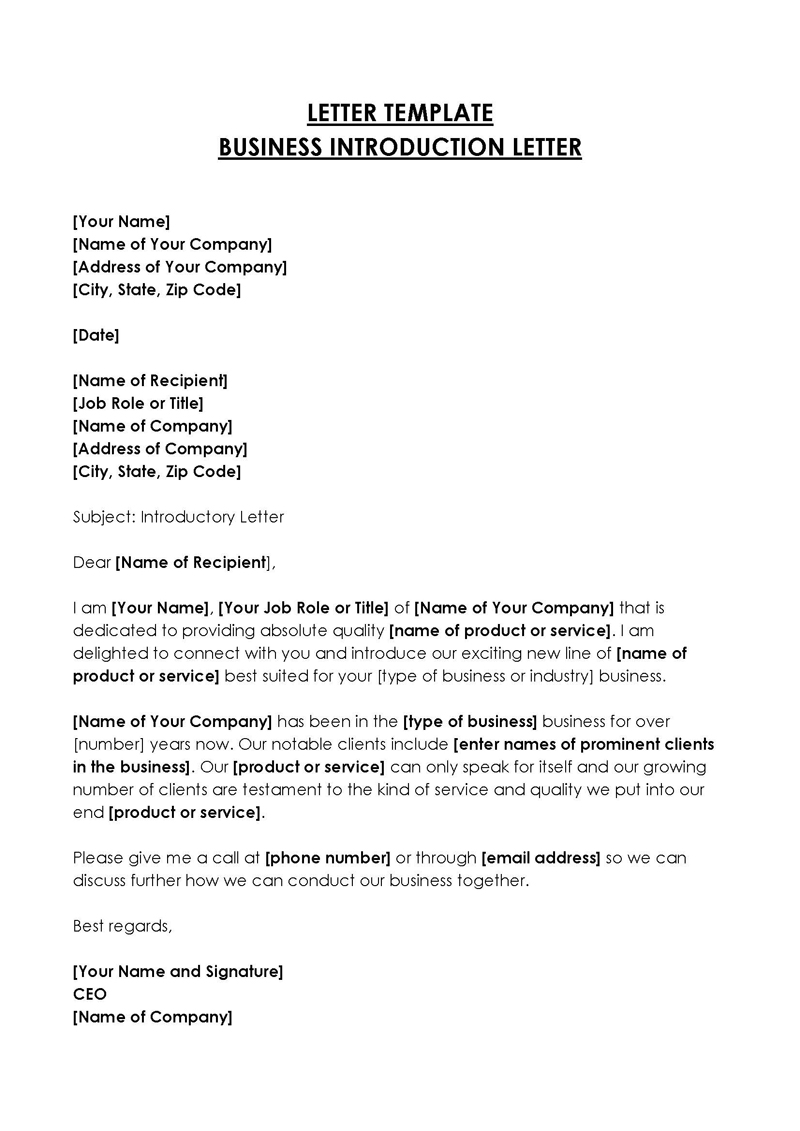
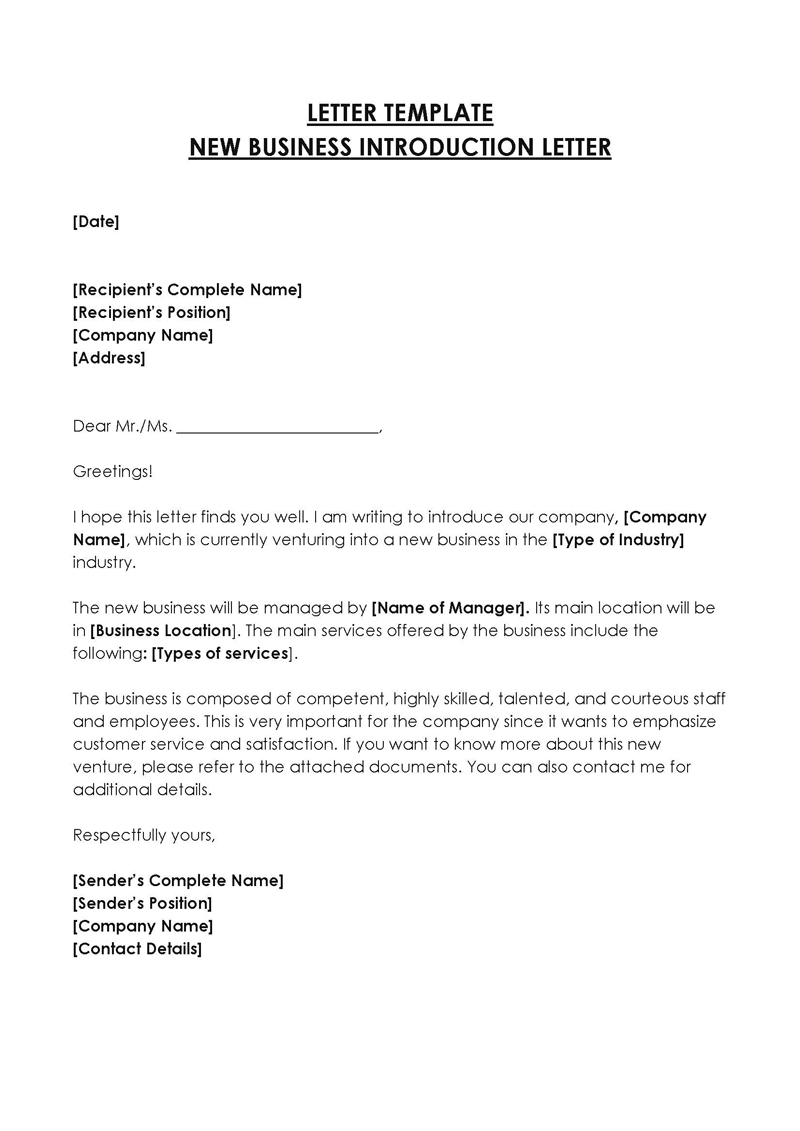

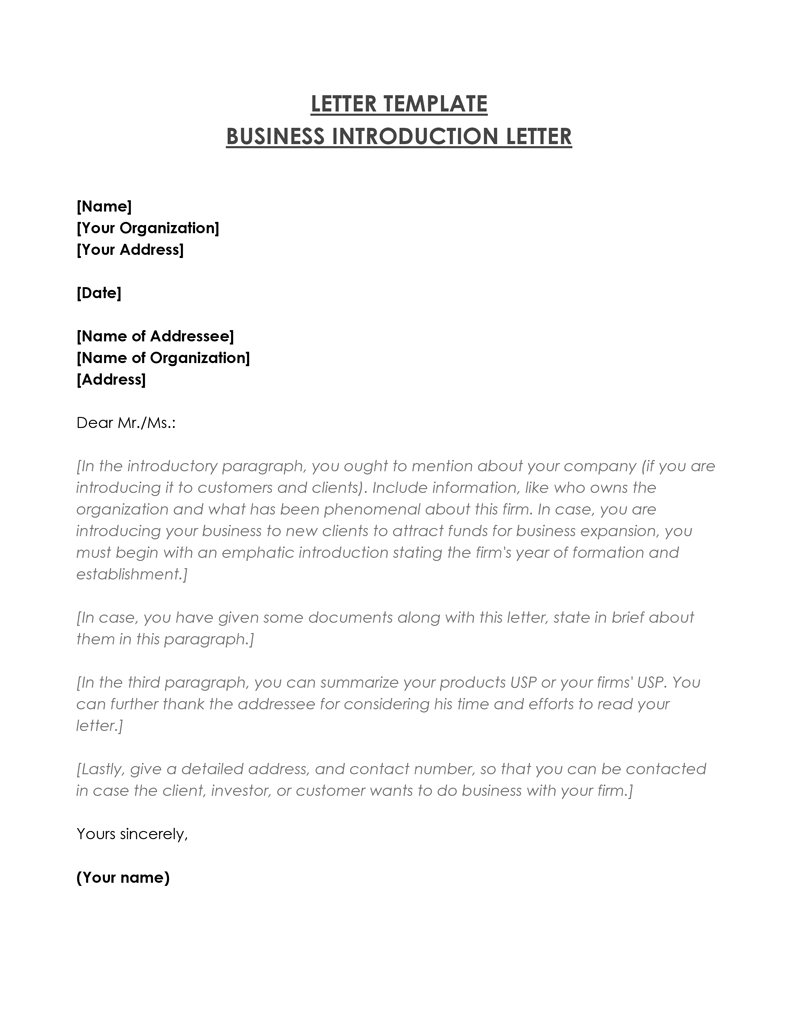
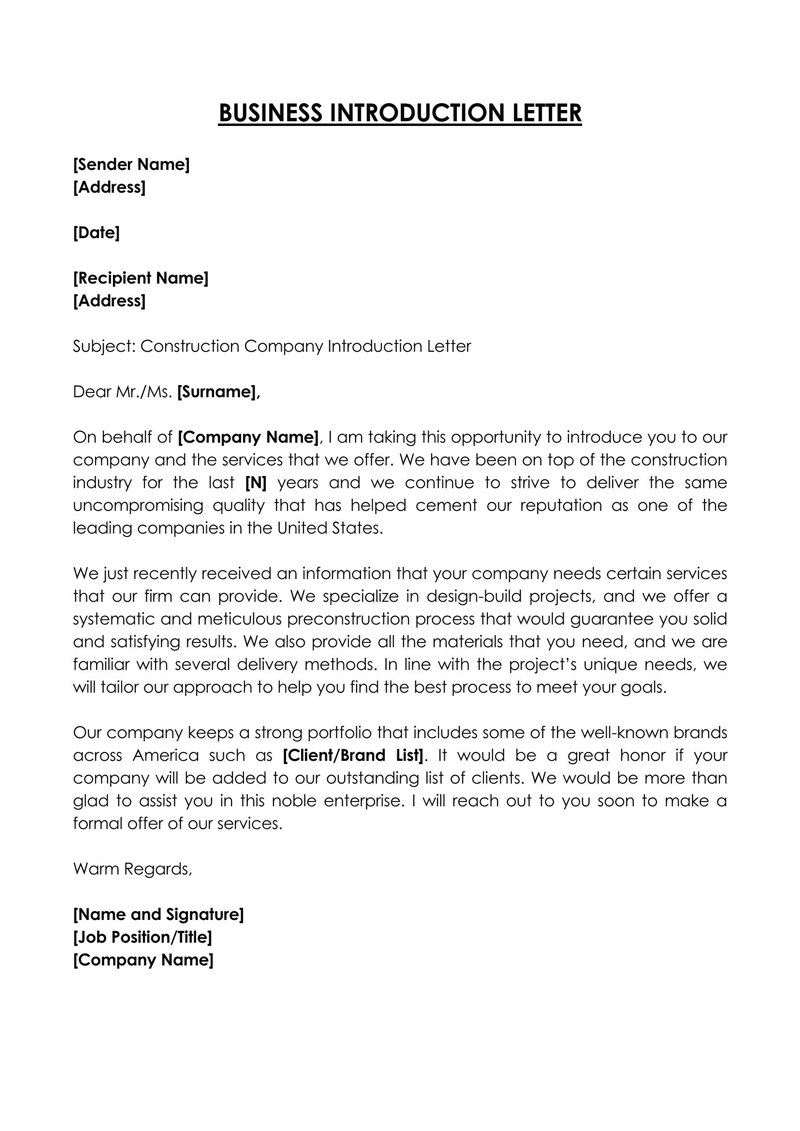
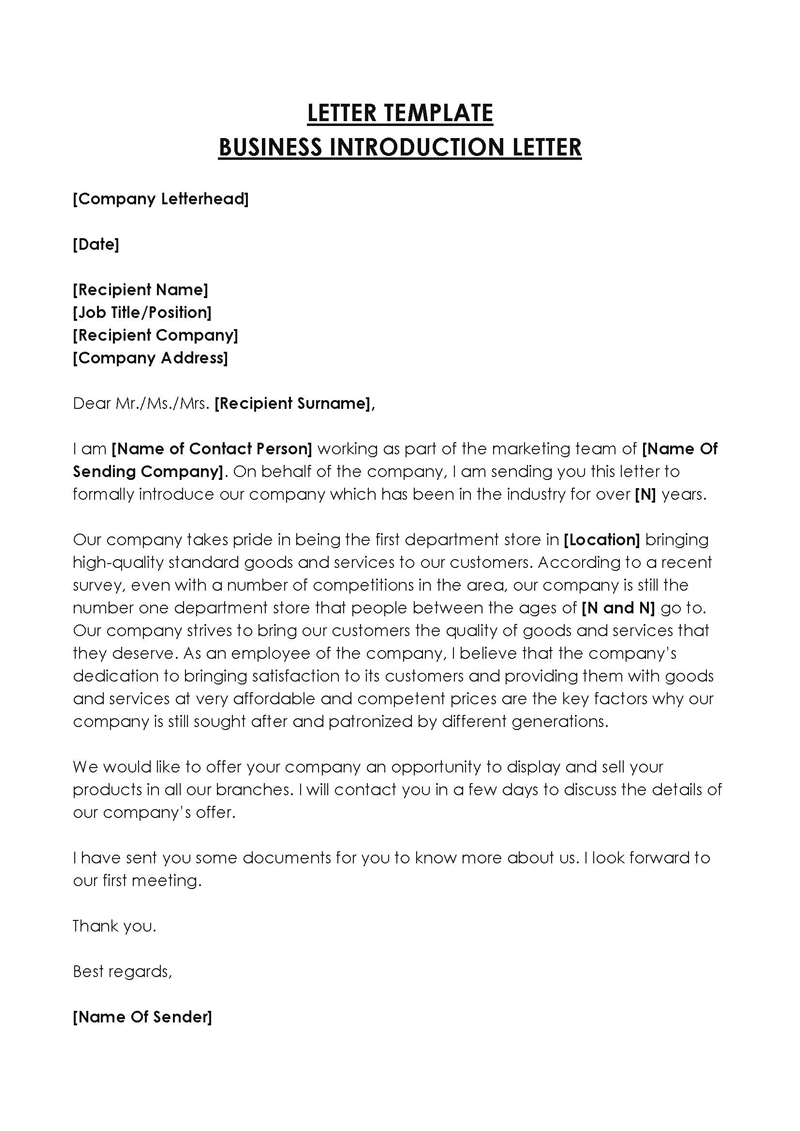
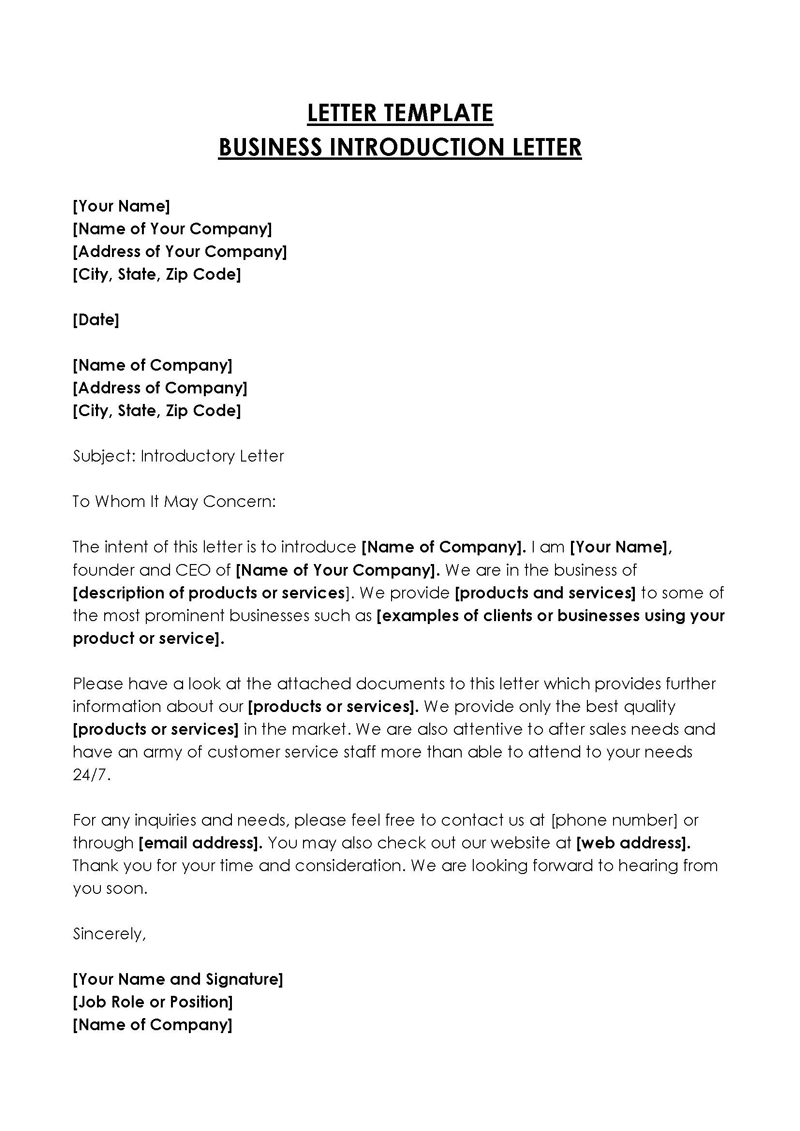
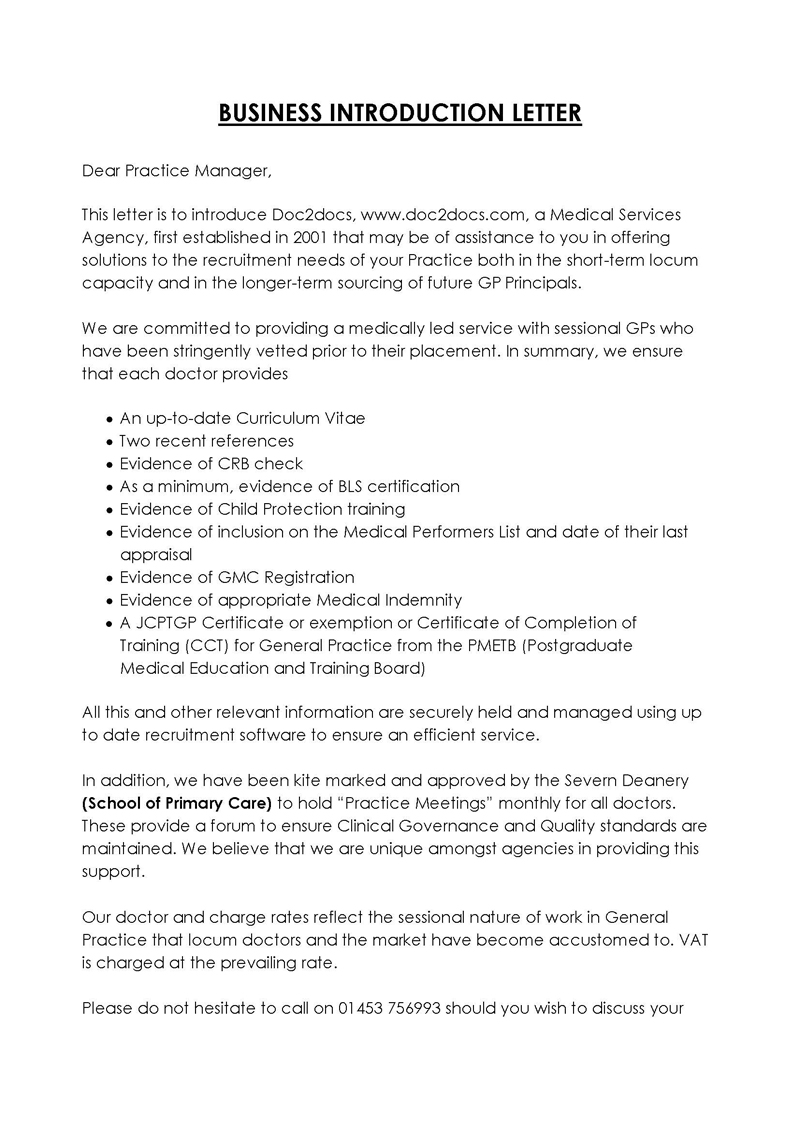
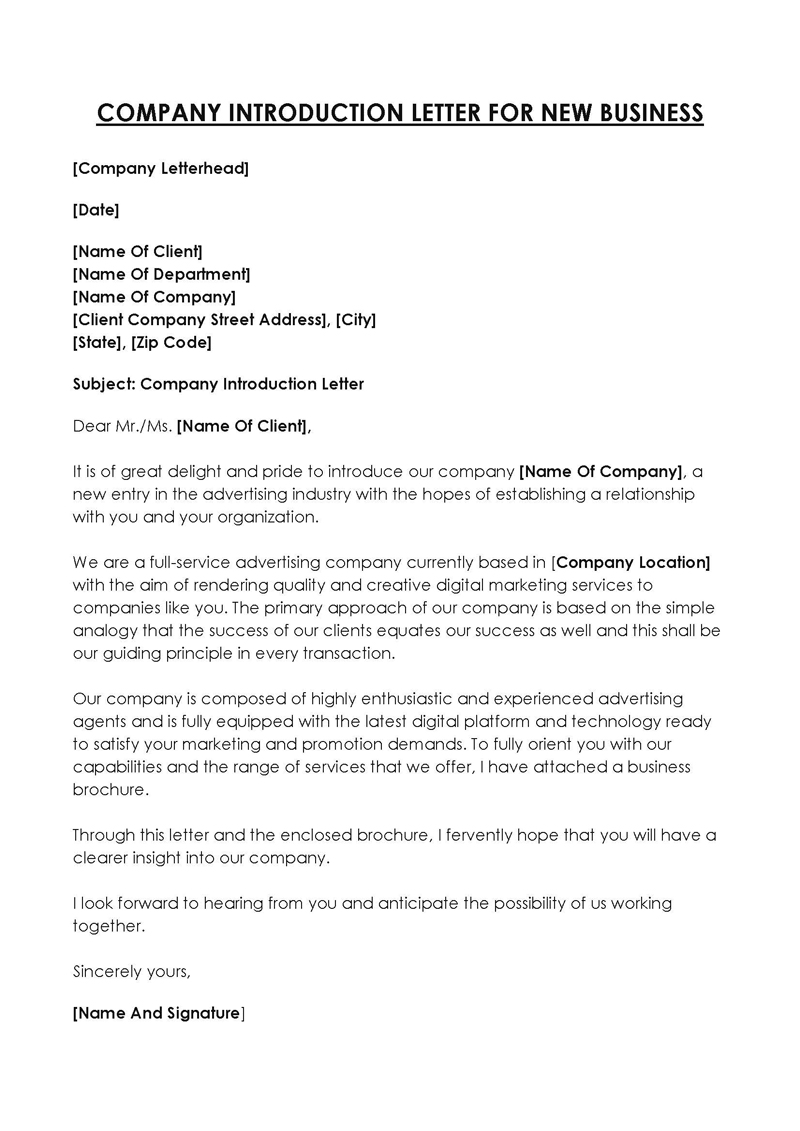
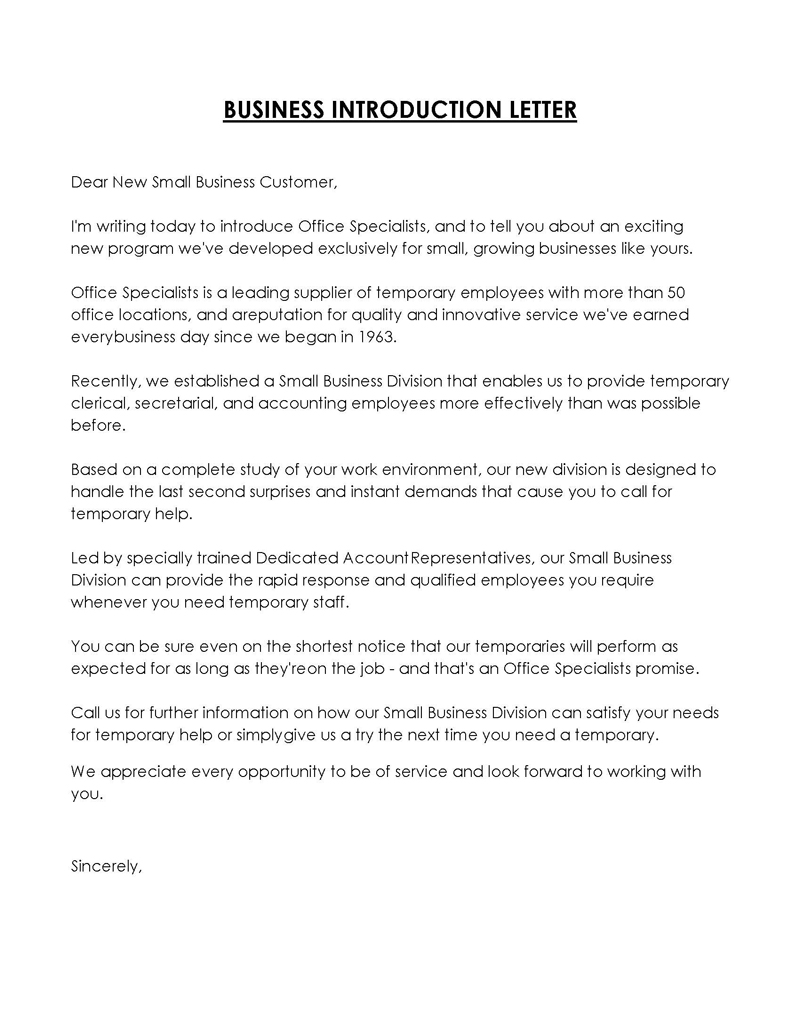
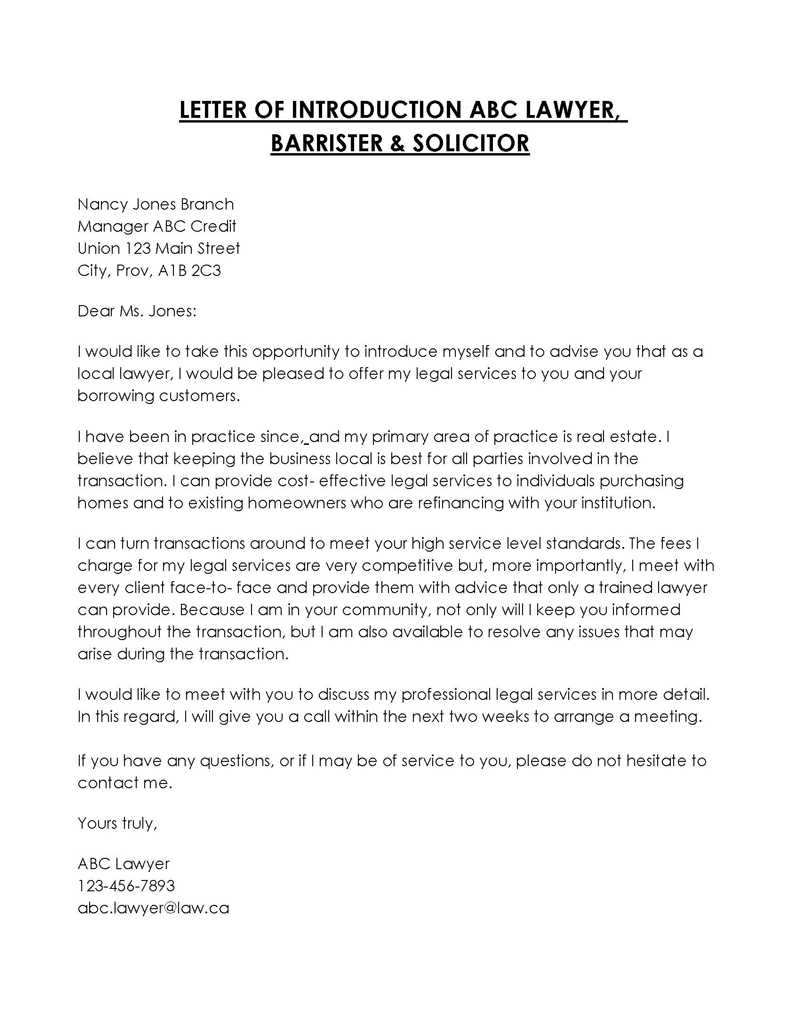
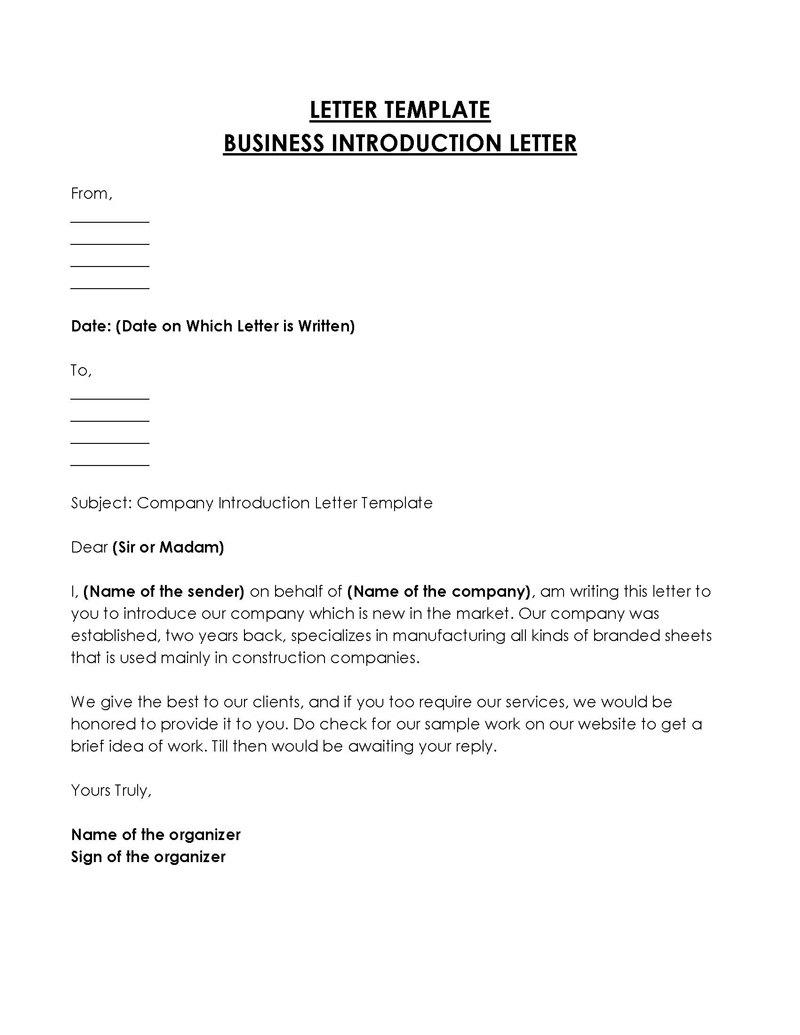
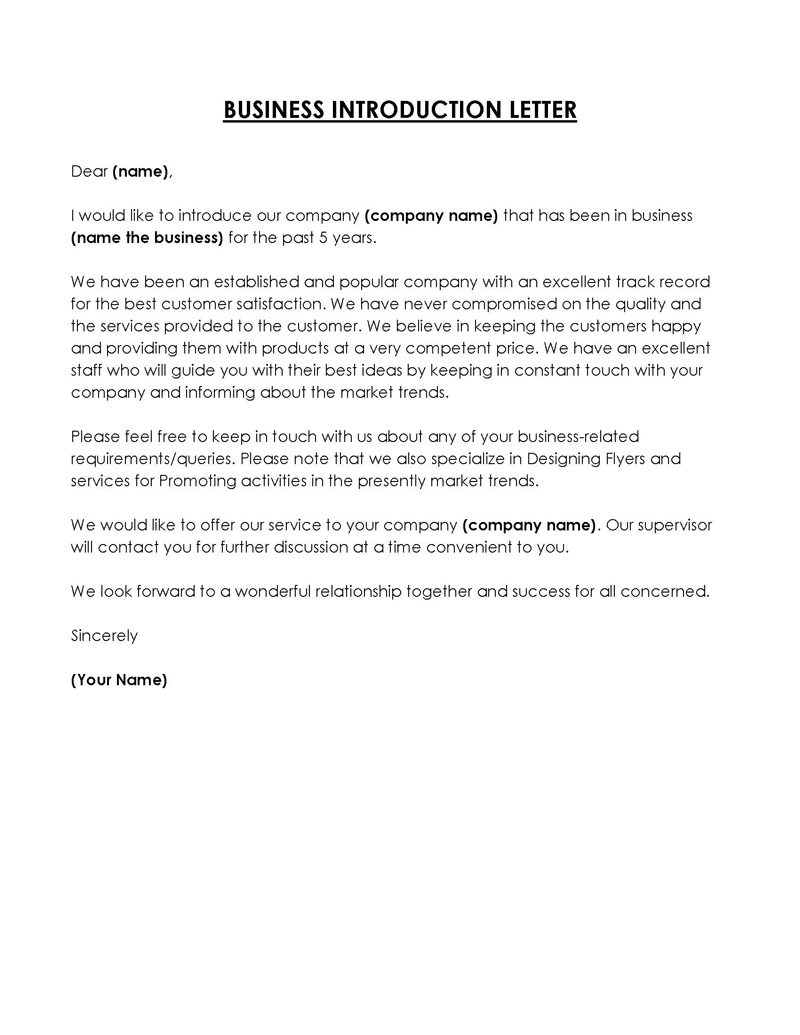
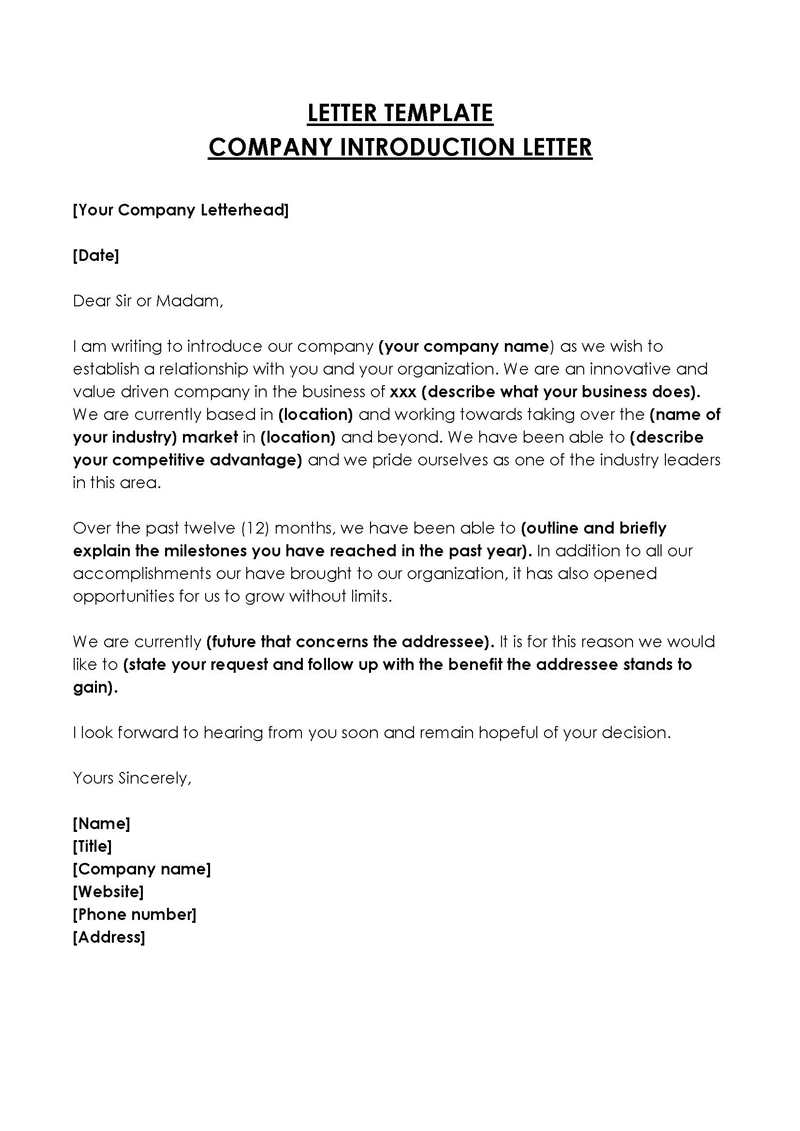
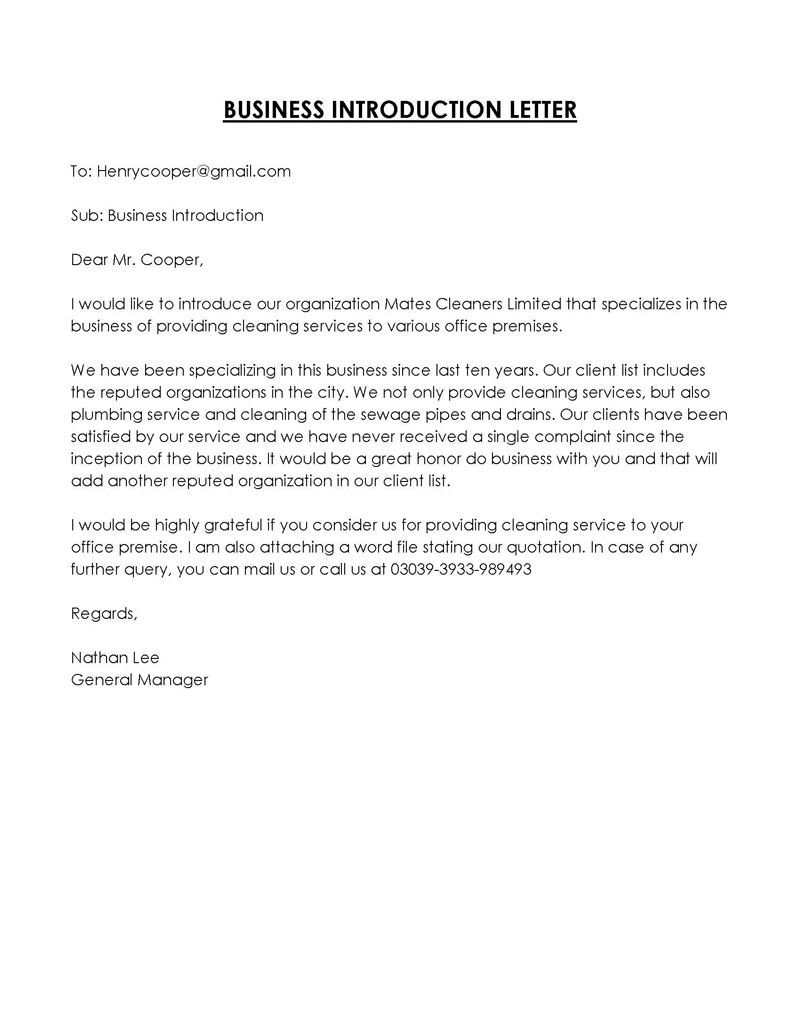
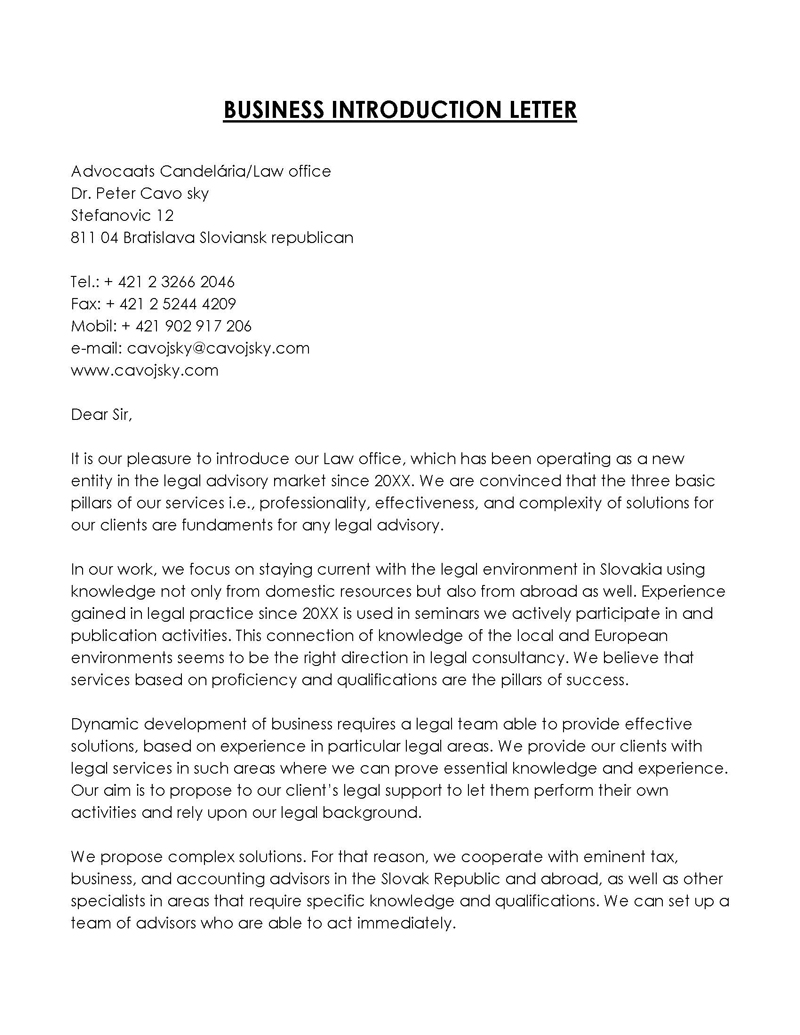
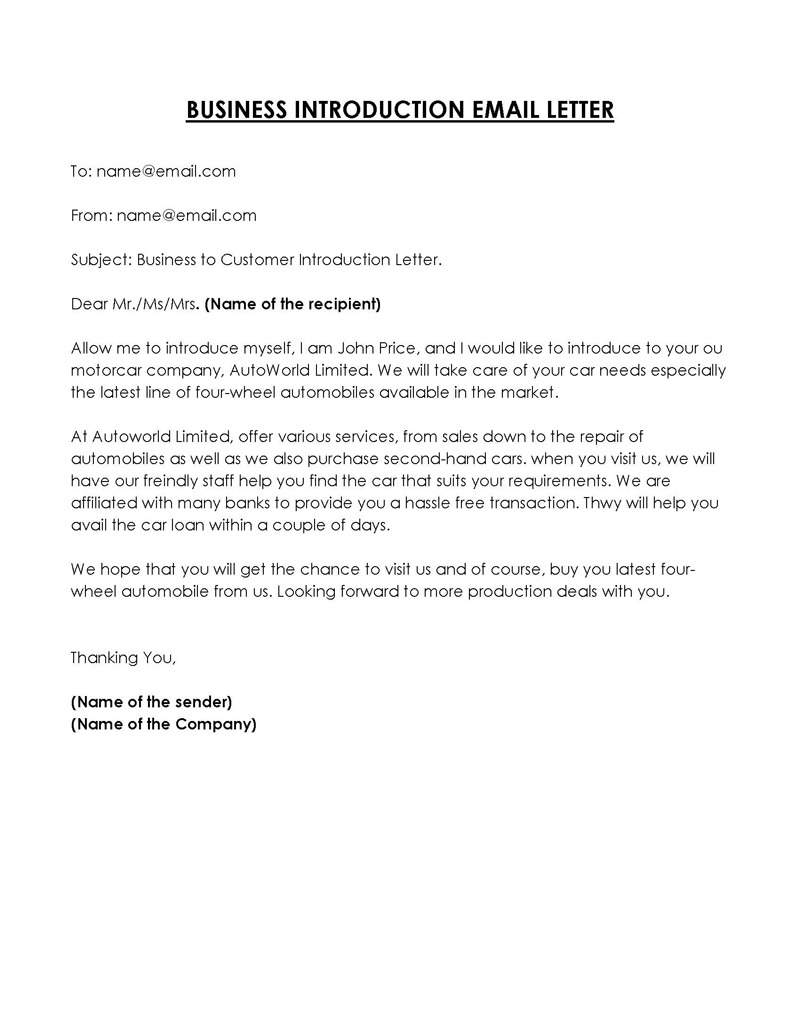
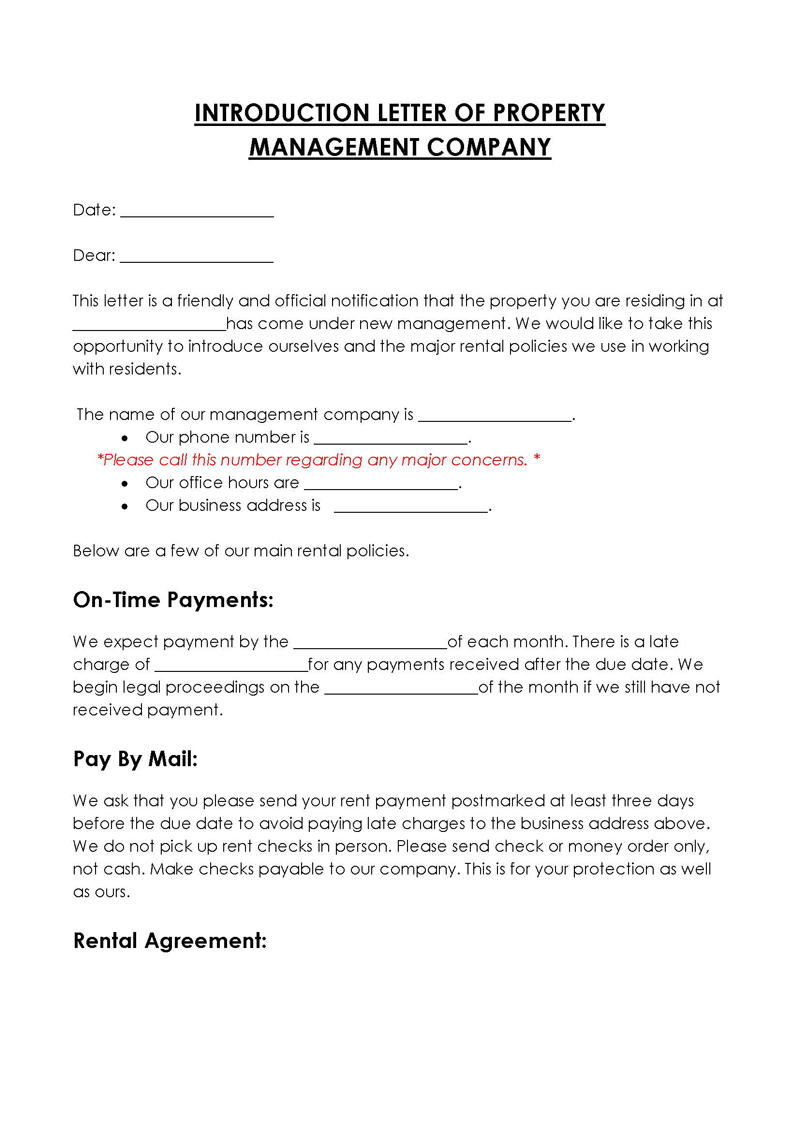
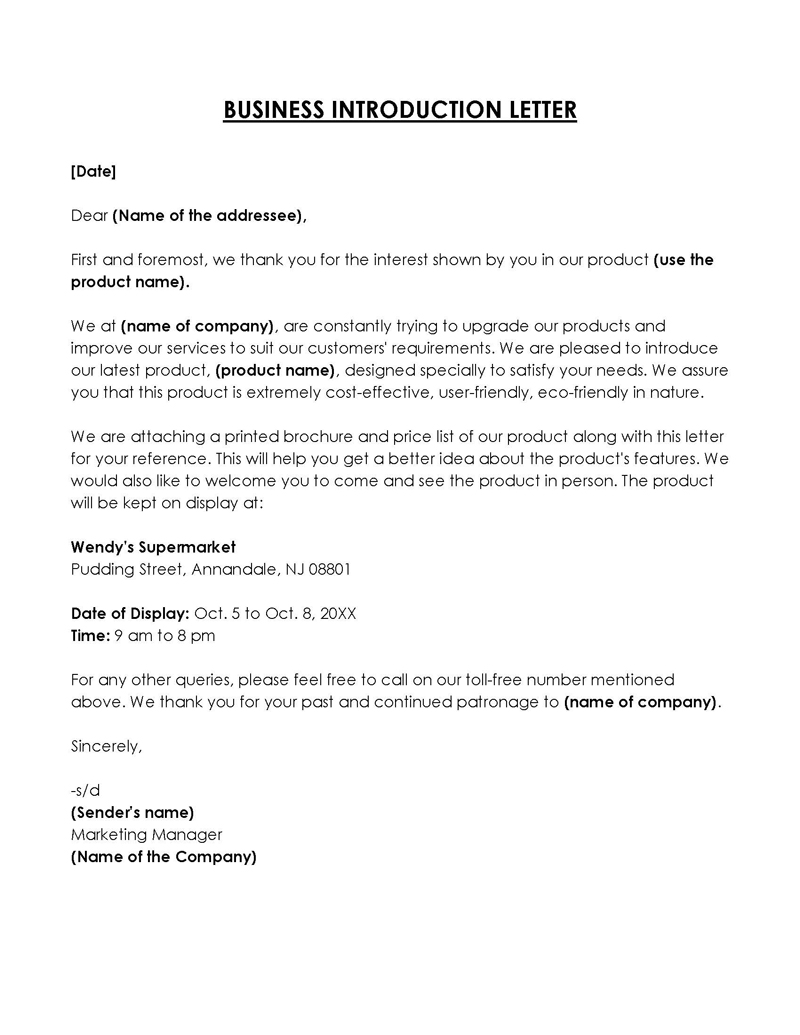
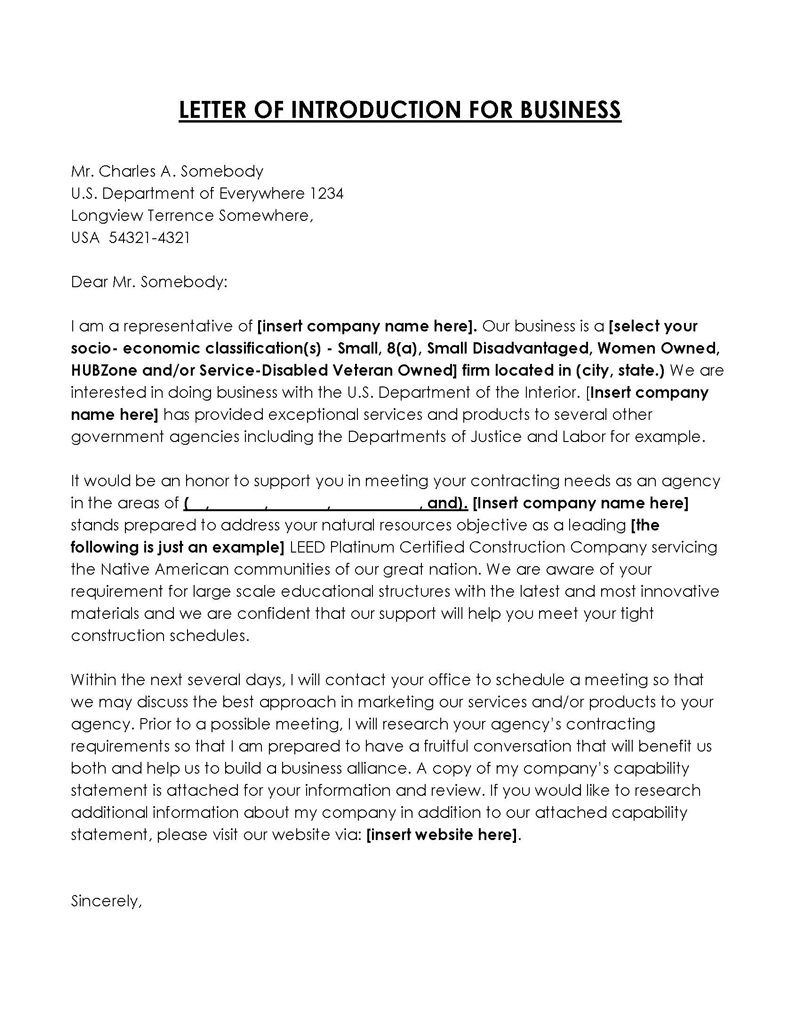
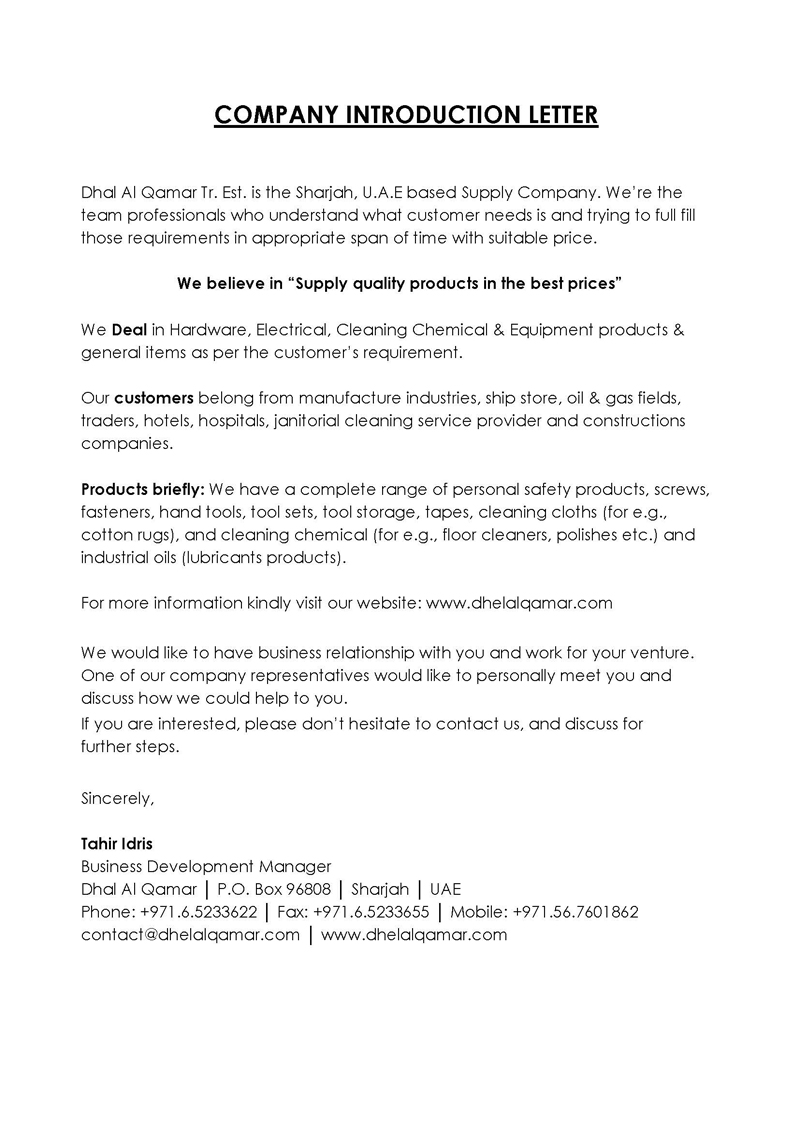
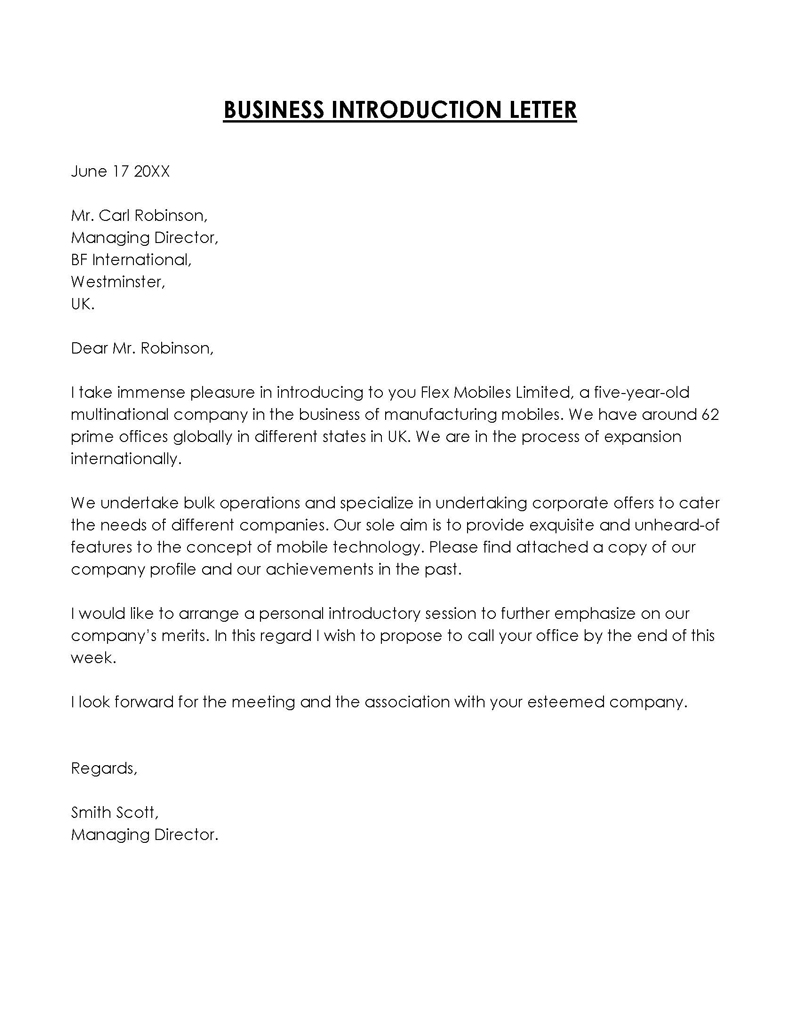
Final Thoughts
A business introduction is a formal and perfect way of letting customers, investors, and other businesses know what a company produces and/or offers. An introduction can be made via a letter, email, social media, website, or in-person.
Introductions made to customers are known as business-to-customer introductions, while those made to businesses are known as business-to-business introductions.
An introduction should give enough details of how a company/business solves a problem or is useful to a particular market. Business introduction letters must be written in a business format. Templates can be used to craft effective business introduction letters.















![Toni Kroos là ai? [ sự thật về tiểu sử đầy đủ Toni Kroos ]](https://evbn.org/wp-content/uploads/New-Project-6635-1671934592.jpg)


